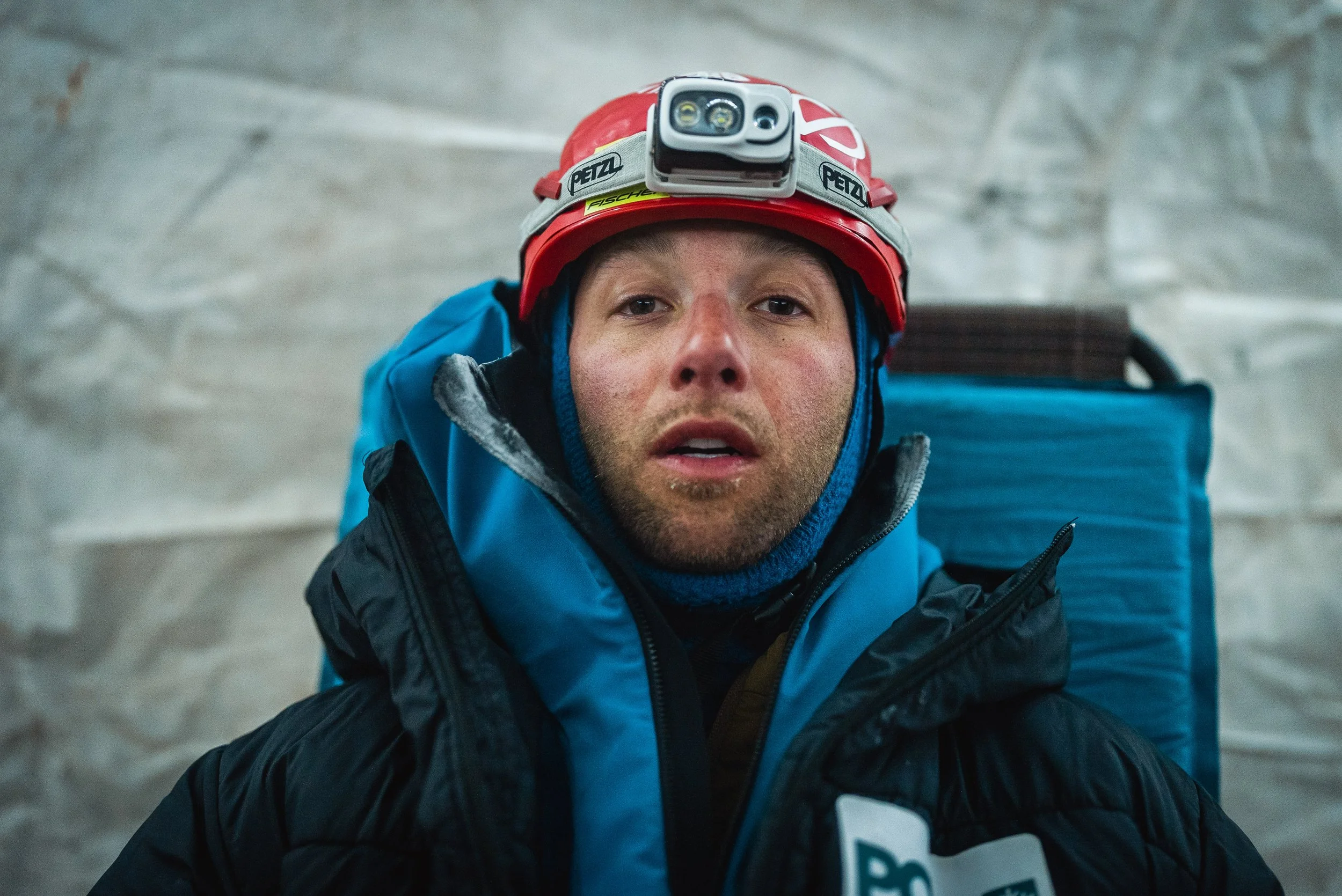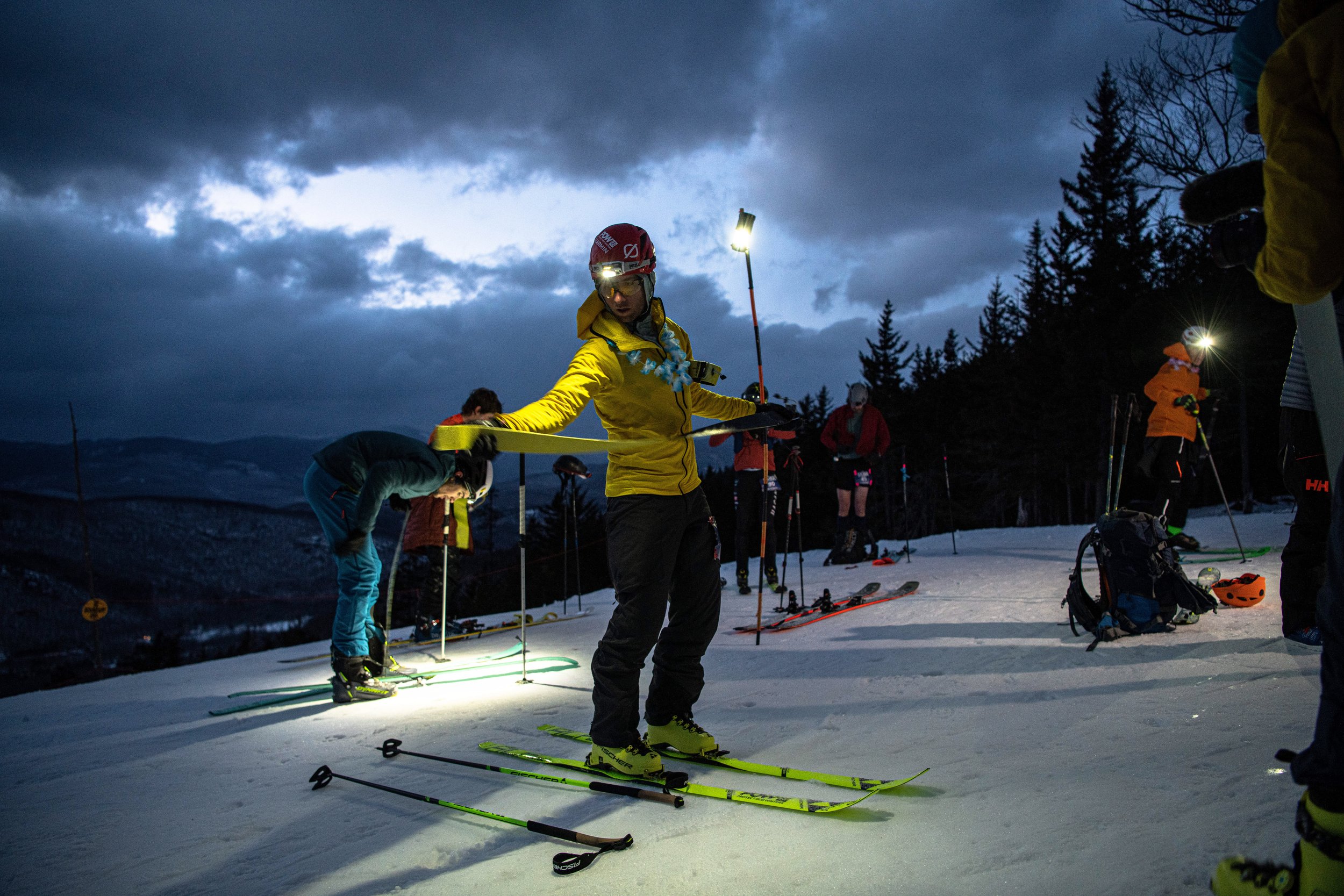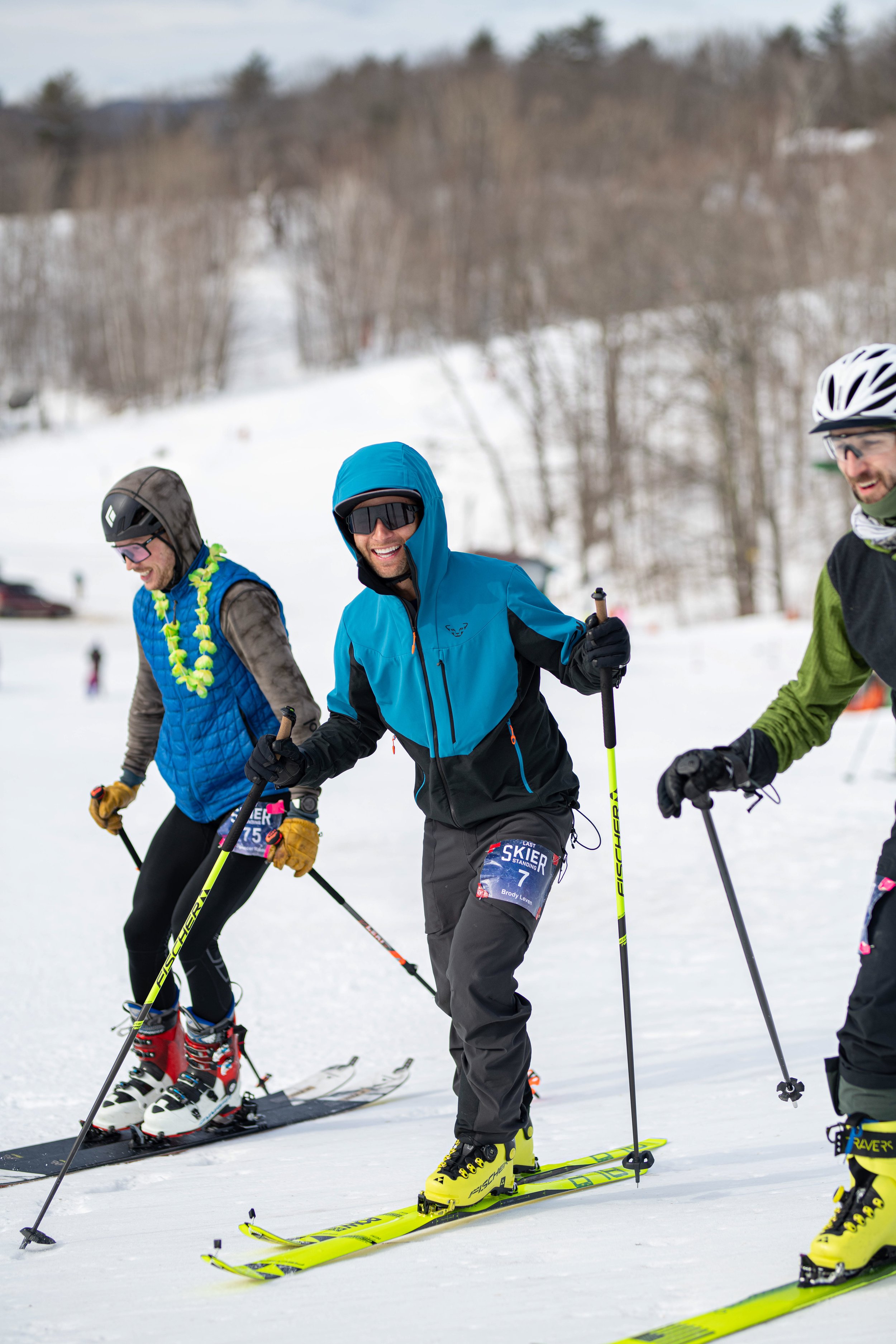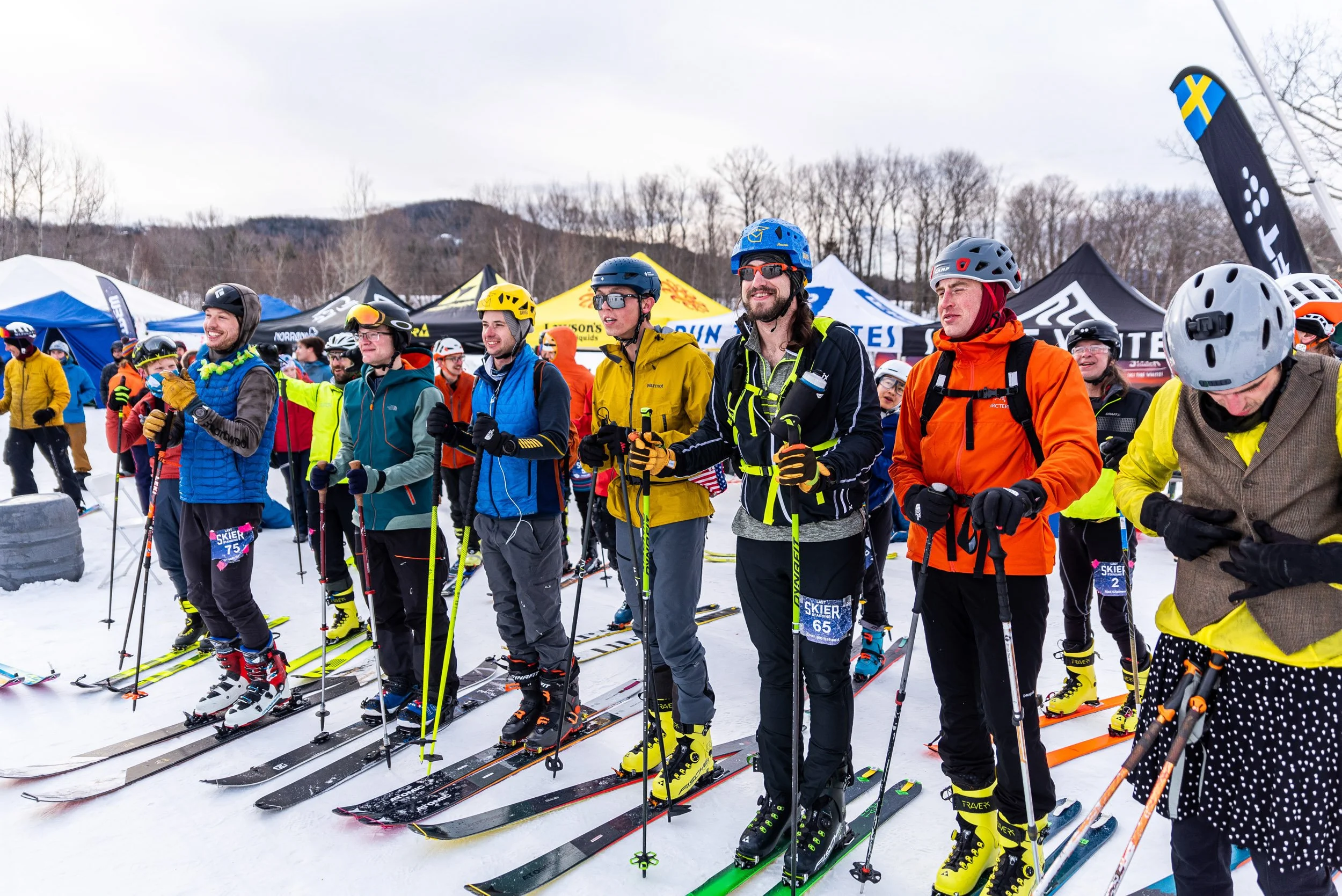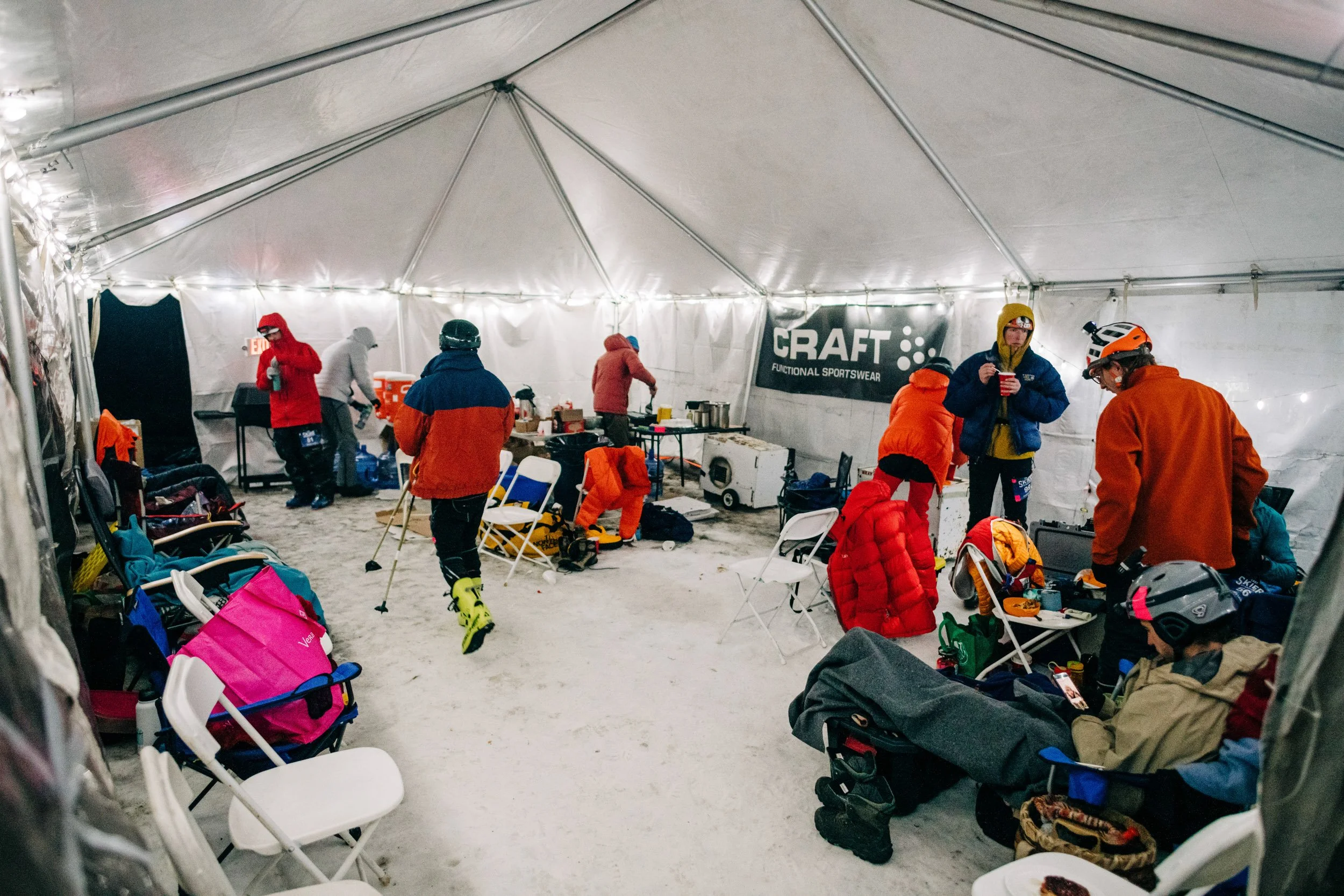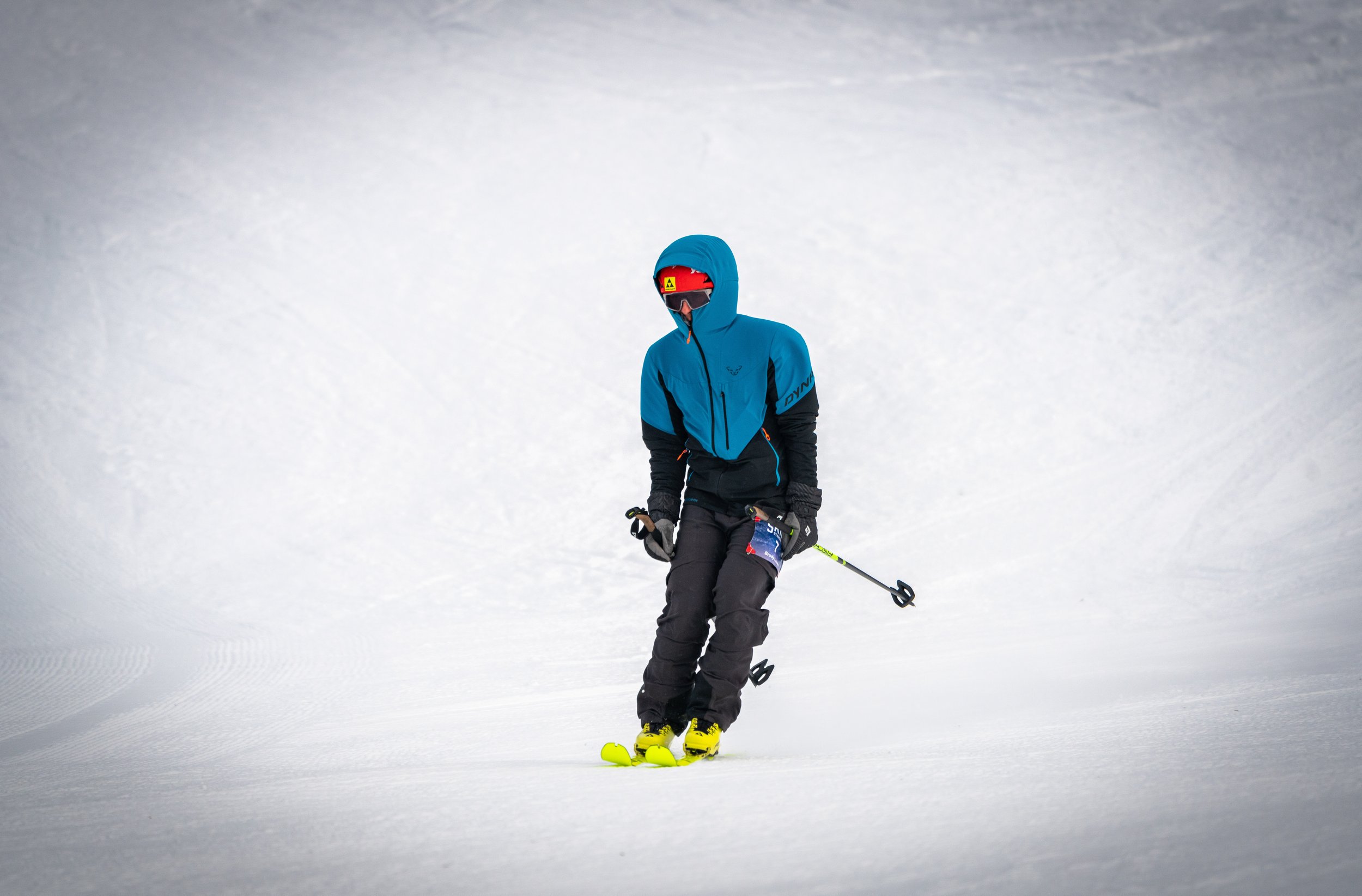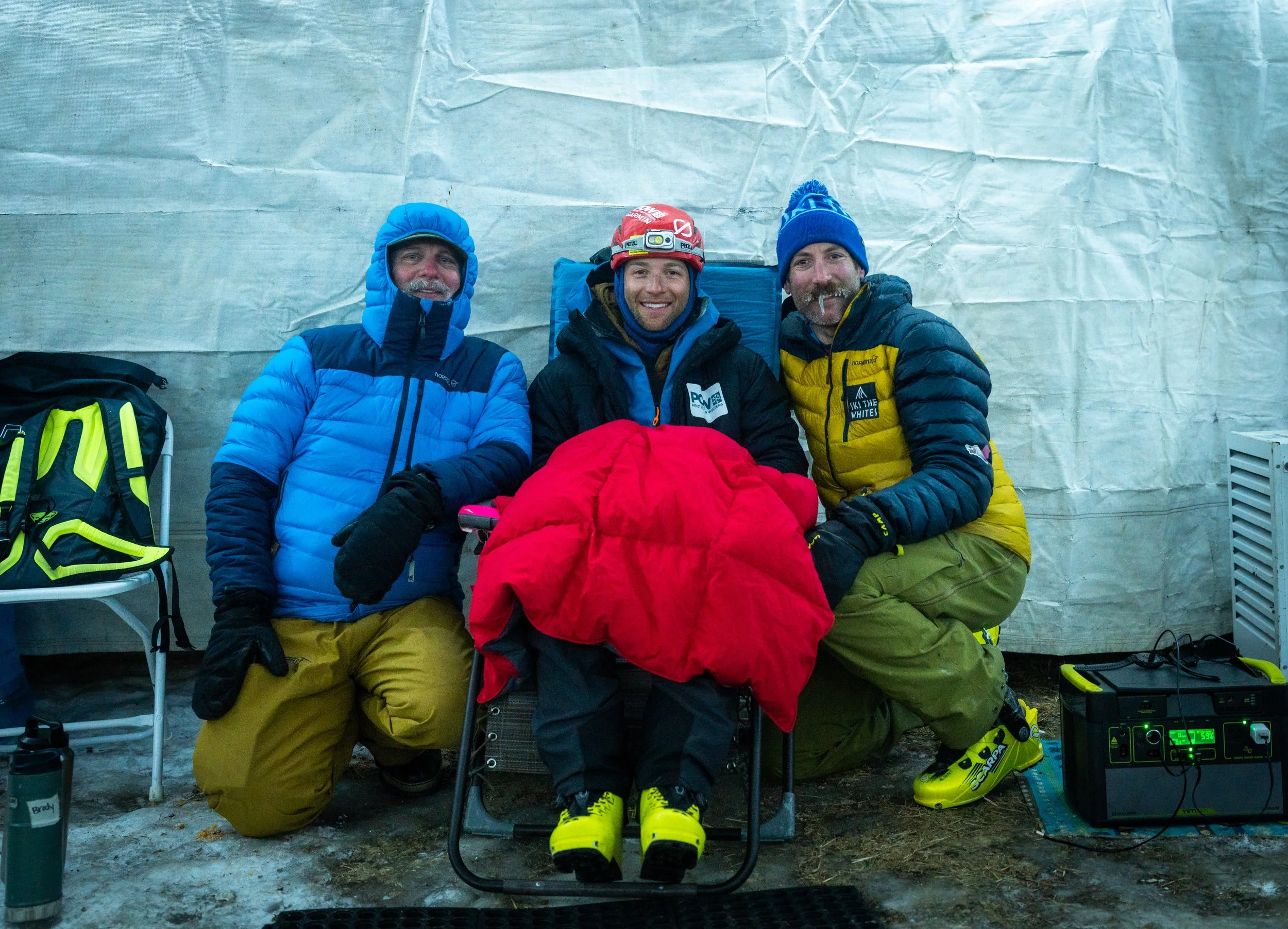Last Skier Standing
February 2022
Chris Shane photo
“You’re not strong enough to win, but you’re too stubborn to quit.”
For the 100 folks at the starting line, the concept is simple:
Climb and ski a 1100-vertical-foot route up New Hampshire’s Black Mountain every hour, on the hour, until one skier remains.
In this third iteration of Last Skier Standing, I was already intimidated knowing the previous years’ results. Notably, in the second year, Ben Eck decided to take the contest to a level I wouldn’t have guessed possible when he didn’t stop until lap 61. That’s 61 hours of non-stop movement, with the amount of rest between laps determined only by how quickly he chose to skin and ski. Climb and ski fast to enjoy a nice rest before lining up for another lap at XX:59, but risk exhausting oneself. Climb and ski slowly to maintain energy but risk insufficient rest.
As a participant in this 2022 event, I didn’t expect to find myself in the depths of my mind, hallucinating as I trudged uphill with him in hour 64, us being the final two competitors. After that, Ben decided to call it, and I was left to my stubbornness to walk up and ski down the hill for a 65th time, claiming the incredibly strange title of Last Skier Standing, a victory I didn’t see coming until about lap 60, when I had decided that, so far into my “day”, I’d stop at absolutely nothing.
Throughout the day(s), I’d seen the previous year’s winners and other “strong-looking folks” hanging near the back of the pack, utilizing more of the “tortoise” approach, which I fully assumed would result in victory. After attempting that for the first two laps, I found myself settling in on a very consistent 39-minute roundtrip lap—much more of the “hare” approach than I anticipated using, but one that felt right for me. Throughout the following days of climbing and skiing, I always found myself completing my lap within seconds of the 39-minute mark. “We could set our watches to it,” said my Fischer team manager, Christian. I don’t know what this consistency says about me, given the inconsistency in lap conditions (conversations vs. podcasts, ice vs. corduroy, bootpacking vs. skinning), but I find it interesting if nothing else.
A week before the event, Fischer, my newest partner brand, invited me to New Hampshire for the event hosted by local shop and community builders Ski The Whites. I wasn’t familiar with it, certainly hadn’t done any specific training, and am pretty averse to mixing competition with what I enjoy—hence why I rarely pin on a bib. But my other specific endurance test for the winter had been cancelled due to circumstances beyond my control and limits are something that fascinate me, so I decided to go with it. While I didn’t have any specific numerical goal, I certainly hoped that I would be able to find my limit—the lap during which I absolutely would not be able to continue, physical or mental fatigue turning me around.
Little did I remember how much I love the New England backcountry ski culture, one that I grew to appreciate particularly after speaking at the Granite Backcountry Alliance Wild Corn backcountry ski festival in 2018. Once again, the community there welcomed me warmly. My confidence was almost non-existent, as I know so many folks train for this event given its reputation, particularly in the northeast. As the group standing at the starting line 59 minutes past the hour dwindled with each accumulated lap, after 24 hours it started to shrink quicker. But so many of the racers look so poised, confident, strong, and…awake. I, on the other hand…
I like sleep, a lot. Frequently 10+ hours per night is what leaves me rested. Going into this event, I knew staying awake would be my crux, and I was right. While my legs never got tired—thanks to my ultralight rando race skis (unlike anything I’d used before) and the event’s format—my mind certainly did. The hallucinations started on the second day and only got stronger into that night, the third day, and the third night. I saw the back of three levitating amish women attending an open-casket funeral. But it was only three trees. I saw a small white Mazda Miata towing an proportionally-small motor boat. Just two piles of snow. And countless other imaginary visions that were surprisingly creative given my diminished brain capacity.
An incredible group of people with steadfast confidence kept me moving upward. Led by my Fischer team manager, Christian, and his good friend—a complete stranger to me before the event—Torey, I managed to stay hydrated and fed (neither of which are strengths of mine), comfortable, and perhaps most importantly of all, with consistently dry feet. I’ve never been treated the way they treated me and I’m forever grateful for their skipping work and sleep, staying up through the night, and never once complaining about anything to me. From my perspective, they gave me a few of their days on this earth and I offered nothing but mumbling and thousand-yard-stares in return. So much happened without me even knowing. They took care of my climbing skins so well that I could have used only a single pair. Their friend, with whom Christian and I skied the day prior on Mount Washington as “warm-up” for the event, Abby, carried home a bag of my gross socks, washed them, and returned them dry and warm and clean and folded. I don’t know how they cooked so much food for me on my little jetboil. I don’t know where my liners were dried, how my phone was charged, and where/if they slept at all. I don’t know whose sleeping bag I tried to sleep under for a couple of minutes or how bad it smells now.
Of course safety was paramount and I never felt in danger since the rush of straight-lining down an icy day-old groomer at 4am in sunglasses with a dying headlamp on tiny skis in minus-15-degree weather always woke me up. While I did fall asleep while skinning (and, once, standing at the starting line), the hallucinations remained nothing more than comical, and my eyes only rolled into the back of my head or hid behind eyelids during the monotony of walking up wide, low-angle, empty, groomed, and closed ski runs.
After about 73 hours awake and 70,000 vertical feet climbed, I got a couple hours of dead-to-the-world sleep before waking up for the drive to and flight home from Boston. Walking and talking were not strengths of mine for the next couple of days, though I managed a full day of state government lobby meetings with Protect Our Winters the morning I got home.
Thanks to the efforts of skiers and ski fans across the country, we raised over $5000 to support climate solutions through Protect Our Winters with a little fundraiser hosted privately, on the side, separate from the event. Folks pledged $1 per lap that they thought I’d complete, with donations ranging from 20 laps to 650. The person who donated $650 did not expect me to do 650 laps (thankfully). Instead, he pledged $10 per completed lap.
I’d never “Everested” before this. I’d never been awake much more than 30 hours. Until this race, I’d never used superlight skimo race skis/skins/poles/bindings, had a “crew,” felt my butt cheeks chafe one another, or tried so hard to find my limit without finding it. In my experience, the most interesting part of this race’s format is that every participant finds their limit except the Last Skier Standing, who is permitted only one additional lap following the final DNF.
If anything, it was my low confidence, questionable pacing, and incredible crew of volunteers that led to “success,” but what a strange way to describe 170 miles of skiing and three sunrises without sleep, followed by an inability to walk, dark purple and white infected toes that barely allowed me to walk for a couple of days, and absolutely no voice, though I barely talked throughout the event.
Within 48 hours of returning home, I signed up for October’s running version, “Bubba’s Backyard Ultra.”
“It is barely hyperbolic to say that current generations may be some of the last skiers standing, as we watch the ability to be a lifetime skier decline. (Clearly) unable to stand still in the face of adversity, this race’s format is an opportunity to raise awareness and funds for an organization that has been near my heart and for which I’ve been volunteering throughout my entire professional career.”
300 feet of bootpacking per lap
100 participants at the starting line
4 racers remaining at 36 hours (the attrition rate is quite interesting to see)
2 quadriceps that somehow never got tired
0 caffeine consumed
-15 degrees Fahrenheit evening temperature
2 chafed buttcheeks
1 negative covid test
$5004 raised for Protect Our Winters through an online fundraiser with the support of Fischer, Garmin, & Goal Zero
Infinite hallucinations while skiing through various states of delirium
39 minutes average lap time
65 laps made to win
69,993 vertical feet climbed and skied
169 miles traveled
13 ski sock changes
3 base layer changes
3 sets of ski boot liners
2 sets of climbing skins
73 total hours awake
6 total minutes of sleep
4 purple toenails
1100 vertical foot lap
PRESS
Thanks to Andrew Drummond at Ski The Whites for hosting the event with his colleague Monte.
Fischer, I appreciate you supporting the event and my participation in it.
Christian and Torey, along with Kyle and Abby: thank you for being the absolute best!

